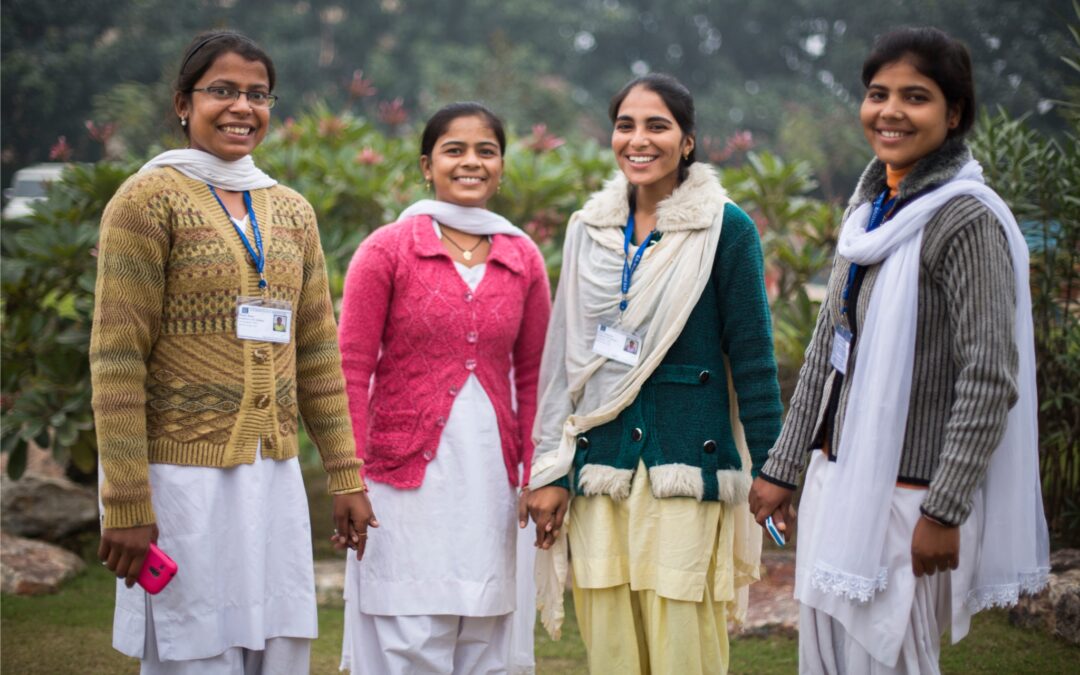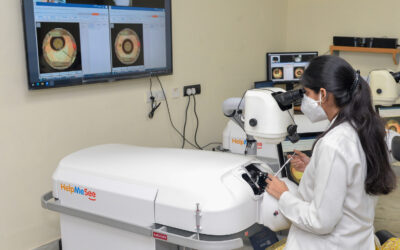Significant strides have been made to increase the representation of women in medicine. In ophthalmology, specifically, the journey toward gender equity has been fruitful. A 2022 study found that women now make up somewhere between 25% to 30% of all ophthalmologists. (1) Their stake in professional and academic leadership positions, however, is substantially lower. According to another study from the following year, only 22.8% of appointed ophthalmology leaders from 2002 to 2022 were women. (2)
For training ophthalmologists, understanding gender equity struggles as well as systemic barriers such as gender bias, unequal access to mentorship, and work-life balance challenges and recognizing the opportunities provided by technological advancements and supportive instructional programs is crucial. Another bridge toward equal representation in ophthalmology lies on increasing efforts in female role modeling and mentorship.

Mentorship is an essential component of career development, yet many women report difficulties finding mentors who can provide the guidance and support necessary for their professional growth. According to a study of 100 women ophthalmologists conducted by Johnson & Johnson, (3) 66% felt their professional experience would be better if they had a mentor of the same gender. Shockingly, a mere 26% received mentorship and 36% felt that a glass ceiling prevents them from reaching their career aspirations.
There is good news, however. In some countries, the percentage of women in leadership positions is on the rise. One study found a 120.3% increase in women’s leadership from 2016 to 2021. (4)
HelpMeSee, a global nonprofit dedicated to eradicating world blindness from cataract, is steadfast in its work to embrace gender equity in mentorship and leadership positions. Instructors like Teresa Diaz Flores, MD, from the Institute of Ophthalmology in Queretaro, Mexico, and Xiaochen Liu, MD, from Shenyang Hospital, in China, help avoid gender disparity in training programs. “It has been a pleasure to…accompany the residents and ophthalmologists to learn the [Manual Small Incision Cataract Surgery] technique…phacoemulsification and complications modules in the training,” Dr. Flores said recently in an interview with HelpMeSee.
But the benefits go both ways, Dr. Liu added. “Teaching others also promotes one’s own thinking about cataract surgery, promoting mutual learning and progress,” she said.

Embracing Technology for Accessible Training
Diversity, equity, and inclusion efforts combined with accessible training programs that use state-of-the-art technology has the potential to revolutionize medical training and further increase women’s representation in ophthalmology.
Training modules such as the HelpMeSee Simulation-based Training Program leverages simulation-based technology to provide high-quality training to aspiring ophthalmologists worldwide. The HelpMeSee Eye Surgery Simulator is a hands-on, immersive experience that mimics real-life surgical procedures in a controlled environment.
“In 2018, I was introduced to the HelpMeSee virtual reality simulator and discovered it was the best tool for ophthalmological surgical training,” Pamela Gonzalez, MD, said in an interview with HelpMeSee, adding that, since then, she has become a certified simulation-based training instructor. “It is amazing to see not only the objective results but also the self confidence that virtual reality simulation gives [trainees].”

Female mentors play a pivotal role in the HelpMeSee Simulation-based Training Program and pave the way for future generations of female ophthalmologists. Additionally, countless other women are in leadership positions within HelpMeSee, including Shaida Etheart, Global Manager of Human Resources, and Bonnie An Henderson, MD, HelpMeSee CEO and world-renowned cataract surgeon. The involvement of women at every level of the organization ensures that trainees receive comprehensive support, fostering a nurturing and empowering learning environment.
“My short- and long-term goal is to make this kind of technology available for all ophthalmological residents and help them develop their surgical skills,” Dr. Gonzalez said.
Reaching More Women
HelpMeSee’s partnership with the United States Agency for International Development (USAID) exemplifies its commitment to expanding training opportunities for women in ophthalmology. Through the initiative, HelpMeSee and USAID provide targeted support and resources to increase the number of women trained in ophthalmic surgery, particularly in regions with a high prevalence of cataract blindness.
By focusing on gender equity, the partnership addresses unique challenges faced by women in accessing quality training and mentorship.
Conclusion
Empowering women in ophthalmology requires a multifaceted approach that addresses the unique challenges they face. By leveraging technology, fostering inclusive training environments, and promoting mentorship, we can create a more equitable and supportive landscape for women in this field. Organizations like HelpMeSee are leading the way, demonstrating the profound impact of dedicated efforts to include and uplift women in ophthalmology.
Learn More About Training in Your Region
Instructor-led Simulation-based Training Courses
Learn More About Training in Your Region
Instructor-led Simulation-based Training Courses
Learn More About Training in Your Region
Instructor-led Simulation-based Training Courses
HELPMESEE SPONSOR’S






- Gill HK, Niederer RL, Shriver EM, et al. An eye on gender equality: a review of the evolving role and representation of women in ophthalmology. Am J Ophthalmol. 2022;236:232-240.
- Lee RH, Vinod K, Grajewski AL. Leadership in ophthalmology professional organizations: a descriptive analysis and trends, 2002-2022. Am J Ophthalmol. 2023;246;155-162.
- Johnson & Johnson vision survey highlights barriers faced by women in ophthalmology. Johnson & Johnson. October 23, 2023. Accessed July 24, 2024. https://www.jjvision.com/press-release/johnson-johnson-vision-survey-highlights-barriers-faced-women-ophthalmology
- Parvand M, Eslami M, Doughty N, Yeung SN, Kherani F. Closing the gender gap among Canadian ophthalmology societies. Semin Ophthalmol. 2024;39(2):150-157.
RECENT NEWS
The Impact of Simulation-based Education in Ophthalmic Residency
Residency is the cornerstone of surgical education. Designed to prepare medical students for the rigors of surgery, the intensive program typically...
The Role of MSICS Training: Building Skills for Phacoemulsification Success
Phacoemulsification is the predominant cataract surgery technique in the United States. In other parts of the world, especially in low-resource settings,...
The Community Ripple Effects of Cataract Surgery Training
Around the world, millions of individuals suffer from cataract blindness—a condition that is preventable and treatable. About 90% of those affected by...




